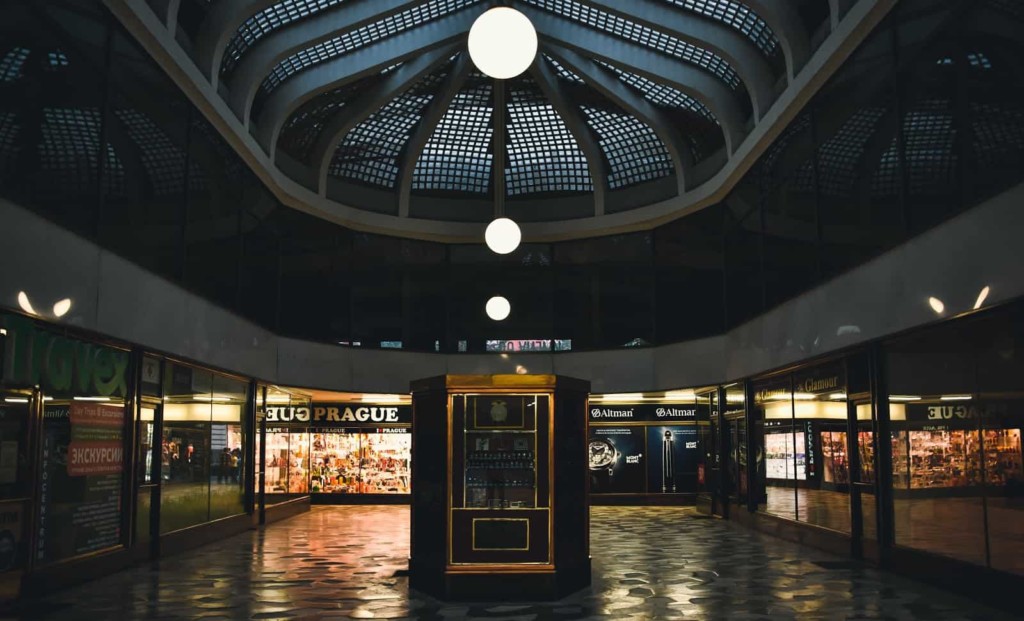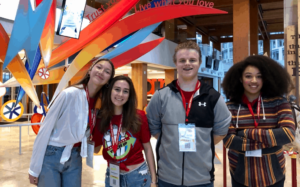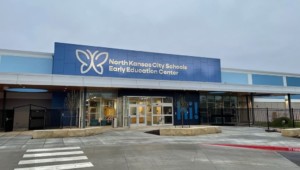Turning Dead Malls into Community Assets

While protests for civil rights and against the Vietnam war filled America’s great cities in the ’60s and ’70s, shopping malls filled the suburbs. The sprawling enclosed shopping complexes were anchored by J.C. Penney, Montgomery Ward, and Sears. Inside most, you could find a Sharper image, Radio Shack, Victoria’s Secret, American Eagle, Burlington Coat, and Foot Locker.
By 1975, there were 30,000 malls accounting for more than half of the retail dollars spent. The 1980s brought the big box explosion with massive strip centers in every suburb housing Walmart, Costco, Target, and (now closed) Pace, Sports Authority, Office Max, Pier 1, and Blockbuster Video.
The number of malls in the U.S. grew more than twice as fast as the population between 1970 and 2015. The opening of the 5.6 million square foot Mall of America in 1992 may have marked the apex of shopping malls in the United States with 20 supermalls of more than two million square feet.
Right after Mall of America opened, Amazon was born and the Internet exploded– it was the beginning of the end of American malls. With the move to online retail and smart supply chain operations across the country, customers are now just a click away from their purchase.
The last two recessions accelerated the decline of traditional retail and shopping malls. The Great Recession began in 2008 with 441 retail bankruptcies. The pandemic of 2020 accelerated online shopping by a couple of years forcing hundreds of retailers into bankruptcy and emptying struggling malls across the country.
These dead malls and strip centers are not only a sign of a declining retail sector, it is a disaster for communities that relied on the property and sales tax to fund basic services.
And there is more to come. Coresight Research estimates 25% of America’s roughly 1,000 malls will close over the next three to five years. Soon most communities will have empty strip centers and a dead mall.
Catalytic Conversion of Dead Malls
In February it was obvious that the growing inequity, dislocation, and retraining needs of the innovation economy meant that nearly every community had unmet public needs. In March when half the working population was plunged into unemployment, it became a full-on national disaster. Federal relief helped in April but ran out during the summer. Regions and segments of the economy — disproportionately impacting women of color — are likely to remain depressed for another year or two.
Almost every American community would benefit (short and long term) from better access to learning, work, and health opportunities for all. The rampant vacancies in malls and strip centers that could be an affordable opportunity for public-private partnerships to create human services centers.
Solutions require a new shared vision of what’s possible, a bit of catalytic capital, and a dose of creative deal-making–civic, commercial, credit, and community leadership (at least two or three of the four).
The key is reversing a vicious cycle and that takes a catalyst-a big impact investment (a grant, guarantee, or reduced return expectation) and a big tenant (or a bundle of viable tenants).
Catalytic capital, according to the MacArthur Foundation, is patient, risk-tolerant, concessionary, and flexible. It’s catalytic in the sense that a deal won’t get done without it.
Resuscitating a dead mall takes creative problem-solving — it creates conditions and incentives that cause aligned investment and cohesive development. It almost always requires strong public-private collaborations that achieve community development goals while salvaging commercial value.
Given the need for 500 of these catalytic development deals nationally, there is an opportunity to build a new kind of tenant solutions firm that builds bundles of national and regional human services including:
- fitness, wellness, and health centers;
- job services, workforce training, and college extensions,
- Small elementary and secondary schools,
- Daycare, elder care, and pet care;
- Mixed-income housing units;
- Thrift stores, food and clothing banks;
- Restaurants and coffee shops; and
- Presentation, exhibition, entertainment, and event space.
Some of these could be government services, some nonprofit organizations, but some will have viable for-profit business models.
Repurposing malls as human development centers extend services to the community, provides some economic benefits to cities, and salvages some return for real property owners.
Examples of Repurposed Retail
Located in an abandoned 1.5 million-square-foot Sears office and distribution center in Memphis, Crosstown Concourse is an innovative vertical urban village including theaters, offices, health providers, a YMCA, a college, a high school, restaurants, and 265 apartments.
The development partnership kept community, learning, health, and art at the core and was made possible by 30 forms of public, private, and philanthropic funding.
The development of High Tech High began with the renovation of the Naval Training Center in San Diego into Liberty Station, now a vibrant shopping and mixed-income housing center and the best example of school-centric urban redevelopment in the country.
Amazon is partnering with Simon Property Group to repurpose old malls into fulfillment centers. Some of the malls are being renovated to include housing and new mixed retail.
There are hundreds of schools in converted strip centers. In 1990, some of the first charter schools including Highland Academy in Alaska and the first Aspire Public School in California were in converted grocery stores. iLEAD Academy is a small project-based high school in a converted strip center an hour north of Louisville. The Kearney School District office and early learning center in Kansas City is also a converted grocery store.
Conclusion
Public-private partnerships for converting dead malls into human services centers isn’t a quick fix – these deals take time to develop and finance. But during this historic shift to online shopping, it is a widespread opportunity to turn a big problem into a big asset.
The ongoing pandemic recession requires additional federal relief investment. Federal incentives to convert dead malls into human service centers represent high leverage, high impact opportunity.
Human services centers could be part of broader efforts to extend a web of support and opportunity in communities likely to be buffeted by economic, climate, and health shocks.
For more, see:
- Human Work: Learn Stuff Computers Can’t Do
- Pandemic Opportunity: Rethink Education Accountability
- Reshaping Talent Development: Pandemic Edition
Stay in-the-know with innovations in learning by signing up for the weekly Smart Update.








Milton Chen
really thought-provoking piece, hope that cities, foundations, school districts and others take a closer look at this opportunity